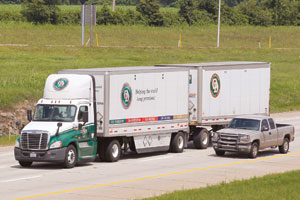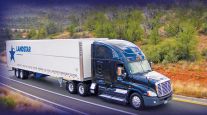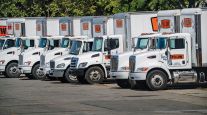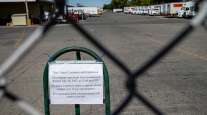Most LTL Profits Rise in 2Q, Lifted by Higher Freight Rates

Second-quarter earnings in the less-than-truckload sector mostly trended upward, fleets said last week, although profitability at the third-largest LTL carrier, Con-way Freight, declined by 16%.
Old Dominion Freight Line, the No. 4 LTL on the Transport Topics Top 100 list, rode a 13% increase in shipments to raise quarterly net income 16% to $85.6 million, or $1 per share, and No. 9 Saia Inc.’s net income jumped 42% to $19.2 million, or 75 cents a share, driven by rate increases. Operating income improved 5.5% at the 14th-ranked LTL division of Roadrunner Transportation Systems.
YRC Worldwide, the second-largest LTL behind FedEx Freight, just before press time also reported improved results, reversing a loss from last year’s second quarter. Net income of $26 million, or 80 cents per share, reflected 0.4% higher rates per 100 pounds of freight, offsetting a 5% drop in tonnage. Revenue fell 4% to $1.26 billion.
Douglas Stotlar, CEO of Con-way Inc., attributed the results at his Freight division to higher claims and wage costs as well as the weaker industrial economy. LTL tonnage fell 3%, year-over-year, while revenue per hundred weight rose 0.4% including fuel surcharge. The operating ratio deteriorated by 1 percentage point to 92.4.
“The big missing ingredient is growth,” Stotlar said, noting his confidence that new Freight President Joe Dagnese can accomplish that.
In June, Dagnese shifted to Freight from Con-way Truckload, where a nationwide search is being conducted for a replacement, Stotlar said.
On the corporate level, where Con-way is No. 4 on the TT Top 100 list of for-hire carriers, net income dropped 18% to $44 million, or 76 cents, Revenue fell 4.4%, year-over-year, to $1.43 billion.
Con-way’s Truckload unit profitability fell 31% to $9.3 million and revenue dipped 13%, hurt by running fewer miles, but Stotlar said its results would improve this quarter. Its Menlo Logistics unit increased profitability by 25%.
Stifel, Nicolaus & Co. analyst David Ross said LTL “dynamics are still constructive” and that Con-way is “able to make improvements, even if not as fast as its competitors,” but, “Something needs to change to unlock value.” He said the company should consider selling off some of its three main divisions.
At Old Dominion, the volume increase helped to improve the operating ratio to 81.5, as revenue climbed 8.8% to $762.2 million for the 11th-largest carrier in the United States and Canada.
“These . . . results reflect our continued ability to win market share,” CEO David Congdon said. “We remain committed to the substantial and ongoing investments necessary to provide capacity for further growth.”
Old Dominion’s revenue per hundred weight slipped 0.8%, also including fuel surcharges.
No. 26 Saia took a different tack, posting 3.9% higher rates, including fuel surcharges, while revenue dipped 2.1% to $323.5 million.
Its operating ratio improved by 2.8 points to 90.3, helped by lower claims costs.
“Strong yield improvements continued in the quarter,” CEO Rick O’Dell said. “We will continue to face difficult tonnage comparisons for the rest of the year.”
At Roadrunner, which ranks No. 17 overall, the operating ratio improved 0.7 point to 94 even as tonnage fell 11%.
LTL results were only part of the reason net income rose 12% to $16.5 million, or 42 cents, and revenue jumped 12.5% to $517.9 million.
Truckload freight revenue, helped by acquisitions, rose 28% to $295.5 million, and profitability rose by an identical amount.
Roadrunner’s transportation management unit improved profitability and raised revenue.
“The quarter was decent,” William Blair analyst Nate Brochmann said in a report. “Roadrunner did a nice job improving customer pricing and independent contractor utilization. It would have been nice to see some of the price improvement flow through to the bottom line.”
Last week’s earnings reports also included truckload carrier Celadon Group, which is No. 42 on the TT100.
Fiscal fourth-quarter net income rose 79% to $12.0 million, or 47 cents, led by a combination of higher rates and acquisition-related activity, but excluding an $.8.8 million gain from an asset sale in the prior-year period.
“Freight demand and capacity were closely aligned during the quarter, which allowed us to provide a high level of service to our customers at an increasing rate level,” CEO Paul Will said.
Revenue per loaded mile rose more than 10% to $1.81, due to rate increases and higher-margin freight from acquisitions.
Acquisitions such as A&S Services last year, increased driving school graduates and additional owner-operators pushed Celadon’s seated tractor count 41% higher to nearly 4,500.
Quarterly revenue rose 28% to $253.3 million.




